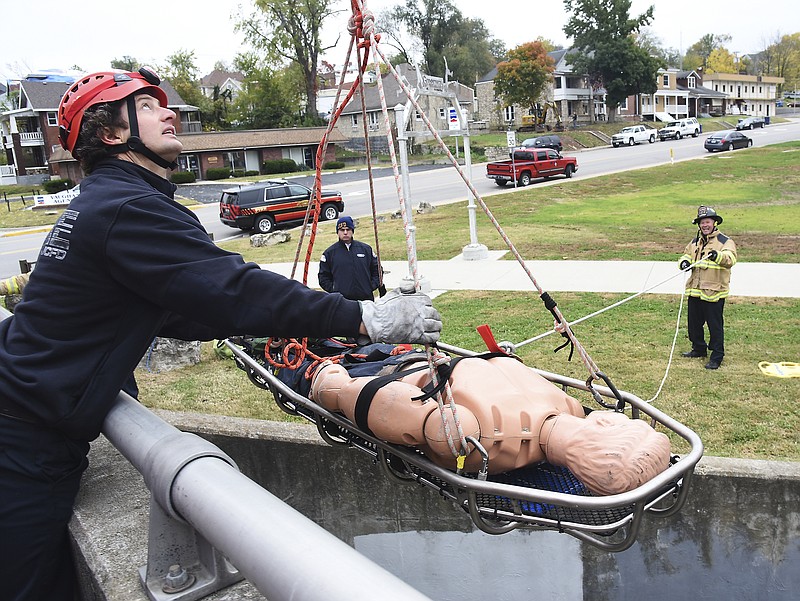Over and over again, Jefferson City firefighters "rescued" flood, fall or accident victims from Wears Creek this week.
During training - held Monday, Tuesday and Wednesday - firefighters deployed a boom, ropes, pulleys and a Stokes basket to reach the victim (a mannequin) in the creek from a bridge on Marshall Street.
The firefighters used the training time to learn how to efficiently use Paratech brand rescue equipment that was specifically designed for use on the department's new rescue trucks. The department received the trucks last year.
The department conducted the training during each work shift. Half the firefighters working a shift underwent training in the morning. The other half received the training in the afternoons, Capt. Nick LaBoube said.
The department considered the capability of the rescue equipment when it began designing the new trucks several years ago, he said. The mono-pod is connected to a link on the frame of the truck and stabilized using ropes and pulleys.
The initial purchase of the Paratech mono-pod system began with a grant. As the department identified further uses for the equipment, it has been able to supplement the grant, he said.
"We've done a lot of testing - done a lot of trial and error," LaBoube said.
And the department has developed a system it hopes will be useful for a number of applications.
In order to know how much can be safely lifted using the new mono-pod equipment, LaBoube added, "We've tried to figure out - to the pound - how weight transfers (in the system)."

